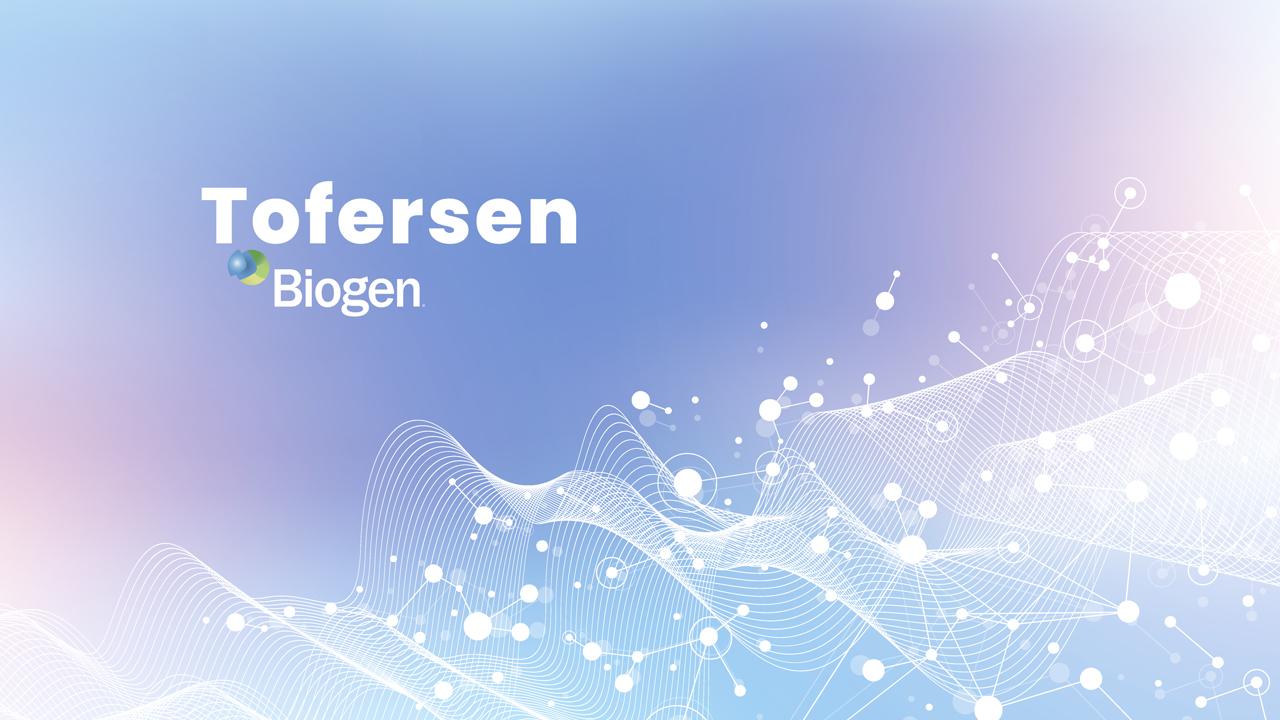Looking for something?
An ASO Is Granted Accelerated Approval By the FDA

Tofersen, an antisense oligonucleotide treatment for SOD1-ALS, a rare form of amyotrophic lateral sclerosis (ALS), was recently granted accelerated approval by the U.S. FDA. This is quite significant, as approval was granted based on a biomarker rather than clear clinical improvement of the disease. This flexible approach to granting approval may have far-reaching implications for the treatment of many neurodegenerative diseases beyond ALS.
Approximately 2% of those diagnosed with ALS have the SOD1 mutation. Currently, around 330 people in the US have been diagnosed with this form, but close to an additional 120 a year are newly diagnosed. Those with SOD1-ALS have a mutated form of the SOD1 gene, which causes a toxic form of SOD1 protein to be produced and accumulate.
Tofersen is an antisense oligonucleotide that binds to SOD1 mRNA, allowing for its degradation by RNase-H, thus blocking the production of SOD1 protein. Tofersen resulted in CSF SOD1 levels that were greatly reduced after three months, and blood plasma neurofilament light chain (NfL) levels progressively dropped over six months. Both reductions were maintained over the additional six months of treatment. For more information, read our brief review of trial results here and the analysis of the VALOR trial and the open-label extension results here.
Tofersen, which is now being marketed as Qalsody, is the first ALS drug to receive accelerated approval and only the fourth to gain approval. In contrast to the other three approved treatments, tofersen targets a genetic cause of the disease.
Why Was Accelerated Approval Granted?
The FDA’s Peripheral and Central Nervous System Drugs Advisory Committee met at the end of March 2023, and at this time, they assessed tofersen. During the meeting, patients, family members, and advocates spoke in favor of the drug.
While the Advisory Committee did not agree that tofersen is ready for traditional approval, they weighed the data from the studies against the severity of ALS and the rarity of this form of the disease, which limits the feasibility of an additional double-blind, placebo-controlled study. Although clear clinical benefit was not shown in the trial, the committee decided that the benefit-risk profile was favorable and that NfL is a reasonable surrogate marker to predict clinical benefit of tofersen.
When asked, “Is the available evidence sufficient to conclude that a reduction in plasma neurofilament light chain (NfL) concentration in tofersen-treated patients is reasonably likely to predict clinical benefit of tofersen for treatment of patients with SOD1-ALS?” the committee members unanimously voted yes.
However, the committee responded with a 3 – 5 vote (1 abstained) against tofersen’s readiness for full approval when asked: “Does the clinical data from the placebo-controlled study and available long-term extension study results, with additional supporting results from the effects on relevant biomarkers (i.e., changes in plasma NfL concentration and/or reductions in SOD1), provide substantial evidence of the effectiveness of tofersen in the treatment of patients with SOD1-ALS?”
After the Advisory Committee’s recommendations were provided, the FDA continued to review the New Drug Application for tofersen for the treatment of SOD1-ALS.
Teresa Buracchio, MD, acting director of the FDA’s neuroscience office, explained that “Certain situations — like when a disease is rare, life‐threatening, or severely debilitating with an unmet medical need — may warrant additional flexibility.” Agency guidance allows for less certainty about the effectiveness of a drug when “balanced against the risk of rejecting or delaying the marketing of an effective therapy for an unmet medical need.” Accelerated approval may be granted if a product has an effect on a surrogate endpoint that is reasonably likely to predict clinical benefit, but additional studies may be required to confirm the anticipated clinical benefit.
Following the advice of the Advisory Committee, the US FDA granted accelerated approval for Qalsody (tofersen) on April 25, 2023. While the number of potential patients is relatively small, this approval based on NfL as a surrogate marker does have far-reaching implications.
David Corey, our current OTS President, made a statement in the latest President’s Pick that many will agree with: “I also thank the FDA for their thoughtful decision-making balancing the difficulties of definitively testing drugs for small patient populations.”
Tofersen Must Still Prove Itself
While accelerated approval was granted, full approval was not. Biogen must still conduct a confirmatory study, which they are doing in the ongoing Phase 3 ATLAS study of tofersen in people with presymptomatic SOD1-ALS that should be completed in 2027.
The ongoing trial will assess tofersen’s ability to delay clinical onset in individuals who have both the SOD1 mutation and biomarker evidence of disease activity.
Neurofilament: The Key to Tofersen’s Positive Results
Neurofilament light chain (NfL) is a scaffolding protein found in myelinated axons, providing increased conduction speed and structural support. However, injury to axons or neuronal death results in elevated NfL levels in the cerebrospinal fluid and plasma, and so elevated NfL levels have become a marker of axonal injury and neurodegeneration (1). Interestingly, elevated NfL levels in serum have been seen up to an entire year before a patient with SOD1-ALS begins displaying symptoms (2). It is believed that reductions in neurofilament will result in a slower decline in ALS patients. Early NfL blood level reductions were associated with slower declines in respiratory function, muscle strength, and patient-reported disease severity. Imagine the potential to slow the onset of symptoms if elevated NfL levels could be treated when they first begin.
In the Phase 3 VALOR trial, the faster progression subgroup who received tofersen had a 60% reduction in mean concentration of neurofilament light chain, and the lower concentrations were sustained over time (3). Those who initially received the placebo had an increased concentration of NfL in plasma over 28 weeks, and those who chose to cross over to tofersen in the open-label extension displayed a decrease in mean concentration, although not as great after 24 weeks as those who had received tofersen from the beginning. Additionally, earlier initiation of tofersen significantly slowed the decline of clinical function, respiratory function, muscle strength, and quality of life (4).
As mentioned before, the FDA advisory committee unanimously voted that tofersen’s impact on reducing neurofilament is reasonably likely to predict clinical benefit of tofersen.
This is a crucial development because neurofilament could potentially be used as a biomarker for other motor neuron diseases beyond ALS, as elevated NfL levels are associated with numerous degenerative neurological disorders such as Alzheimer’s disease and other dementias. Angela Genge, MD, top recruiter of the tofersen program said, “The most important result from the tofersen program is neurofilament and using a biomarker to demonstrate valid disease modification before seeing the clinical benefit.”
As with many neurological diseases, ALS is a devastating disease that progresses rapidly, greatly reducing quality of life for much of the time remaining to a person who is diagnosed. The FDA’s decision to grant accelerated approval provides hope to the people in the US who are diagnosed each year, as with the treatment there is a possibility that their disease progression could be slowed, or even stalled, and that they could enjoy a greater quality of life than could be expected without the drug. This difficult decision may also prove to be key to bringing vital new medications to people with neurodegenerative diseases as quickly as possible using surrogate biomarkers.
Sources:
- Narayanan S, Shanker A, Khera T, Subramaniam B. Neurofilament light: a narrative review on biomarker utility. Fac Rev. 2021 May 7;10:46. doi: 10.12703/r/10-46. PMID: 34131656; PMCID: PMC8170685.
- Benatar M, Wuu J, Andersen PM, Lombardi V, Malaspina A. Neurofilament light: A candidate biomarker of presymptomatic amyotrophic lateral sclerosis and phenoconversion. Ann Neurol. 2018 Jul;84(1):130-139. doi: 10.1002/ana.25276. Epub 2018 Aug 16. PMID: 30014505.
- Benatar M, Wuu J, Andersen PM, Bucelli RC, Andrews JA, Otto M, Farahany NA, Harrington EA, Chen W, Mitchell AA, Ferguson T, Chew S, Gedney L, Oakley S, Heo J, Chary S, Fanning L, Graham D, Sun P, Liu Y, Wong J, Fradette S. Design of a Randomized, Placebo-Controlled, Phase 3 Trial of Tofersen Initiated in Clinically Presymptomatic SOD1 Variant Carriers: the ATLAS Study. Neurotherapeutics. 2022 May 18. doi: 10.1007/s13311-022-01237-4. Epub ahead of print. PMID: 35585374.
- Miller TM, Cudkowicz ME, Genge A, Shaw PJ, Sobue G, Bucelli RC, Chiò A, Van Damme P, Ludolph AC, Glass JD, Andrews JA, Babu S, Benatar M, McDermott CJ, Cochrane T, Chary S, Chew S, Zhu H, Wu F, Nestorov I, Graham D, Sun P, McNeill M, Fanning L, Ferguson TA, Fradette S; VALOR and OLE Working Group. Trial of Antisense Oligonucleotide Tofersen for SOD1 N Engl J Med. 2022 Sep 22;387(12):1099-1110. doi: 10.1056/NEJMoa2204705. PMID: 36129998.
“The views, opinions, findings, and conclusions or recommendations expressed in these articles and highlights are strictly those of the author(s) and do not necessarily reflect the views of the Oligonucleotide Therapeutics Society (OTS). OTS takes no responsibility for any errors or omissions in, or for the correctness of, the information contained in these articles. The content of these articles is for the sole purpose of being informative. The content is not and should not be used or relied upon as medical, legal, financial, or other advice. Nothing contained on OTS websites or published articles/highlights is intended by OTS or its employees, affiliates, or information providers to be instructional for medical diagnosis or treatment. It should not be used in place of a visit, call, consultation, or the advice of your physician or other qualified health care provider. Always seek the advice of your physician or qualified health care provider promptly if you have any healthcare-related questions. You should never disregard medical advice or delay in seeking it because of something you have read on OTS or an affiliated site.”








